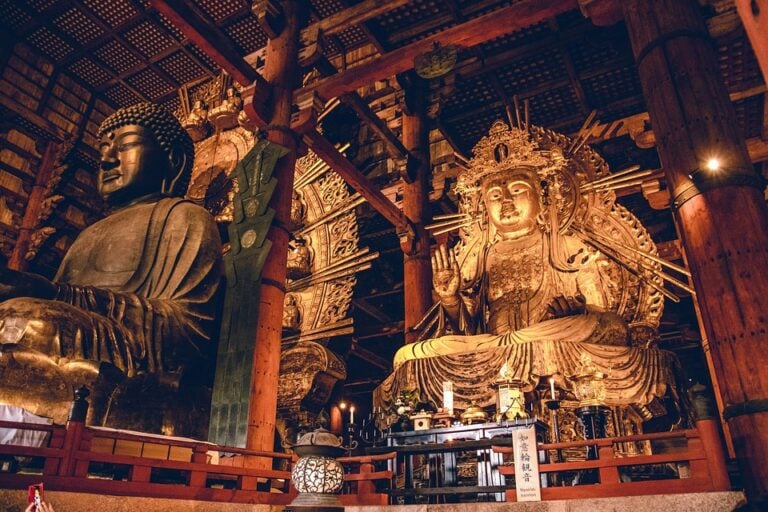
Shintoism and Buddhism are the largest religions in Japan. Although religion have lost prevalence in Japanese culture, they still have many influences. For example, we all know of the multitude of temples in Japan, a variety of festivals held, and the mythological appearances in anime and media. Have you ever wondered what that strange temple in Studio Ghibli’s Spirited Away was or where ninjutsu in Naruto comes from? These are examples of Buddhism in modern day Japan. But, to understand the importance of Buddhism, we should talk about its influence in Japanese history.
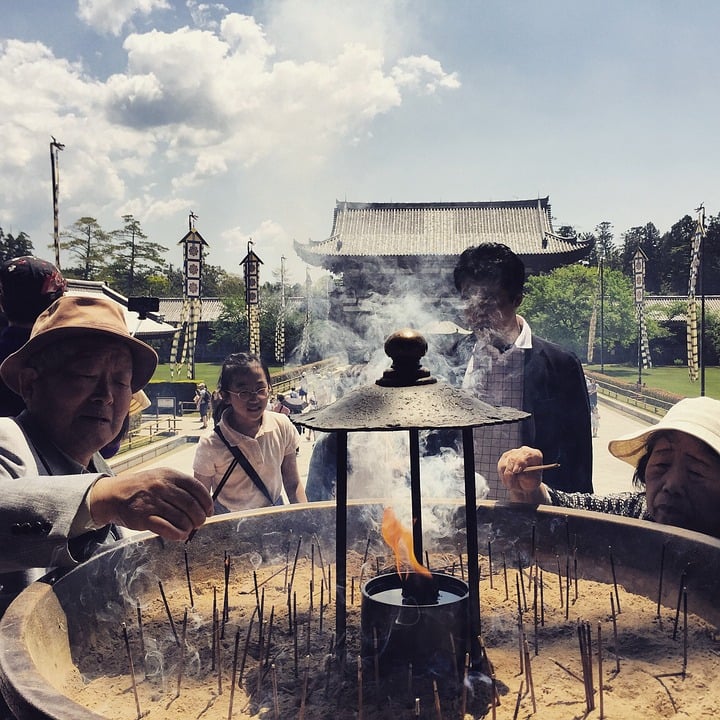
To start, let’s discuss what Buddhism as a world religion is. Buddhism dates back to 450 BCE in what is modern day Nepal with an Indian prince named Siddhartha Guatama (better known as The Buddha). It is important know that the name “Buddha” means an enlightened person and there are a variety of Buddhas throughout history. Siddhartha Guatama, being a prince, grew up sheltered from the sufferings in the world.
One day he left his palace and in the streets, he saw suffering for the first time. This suffering was three things: a sick man, an old man, and a corpse being carried to the burning grounds. This disturbed him so much that he could not return to his life of wealth and happiness. So, he cut his long hair with his sword and exchanged his fine clothes for the simple robes of an ascetic.
In modern day, there are many different schools of Buddhism across the world. Because of this, there is a lot of differences in Buddhist philosophy depending on the sect. While diversity does exist, all Buddhism share common concepts based on the teachings of the Buddha. Three concepts universal in Buddhism are the ideas of Buddhanature, emptiness, and no-self. Buddhanature is the teaching that all things lack something called an ‘inherent nature’. This is the ability to exist independent to anything else.
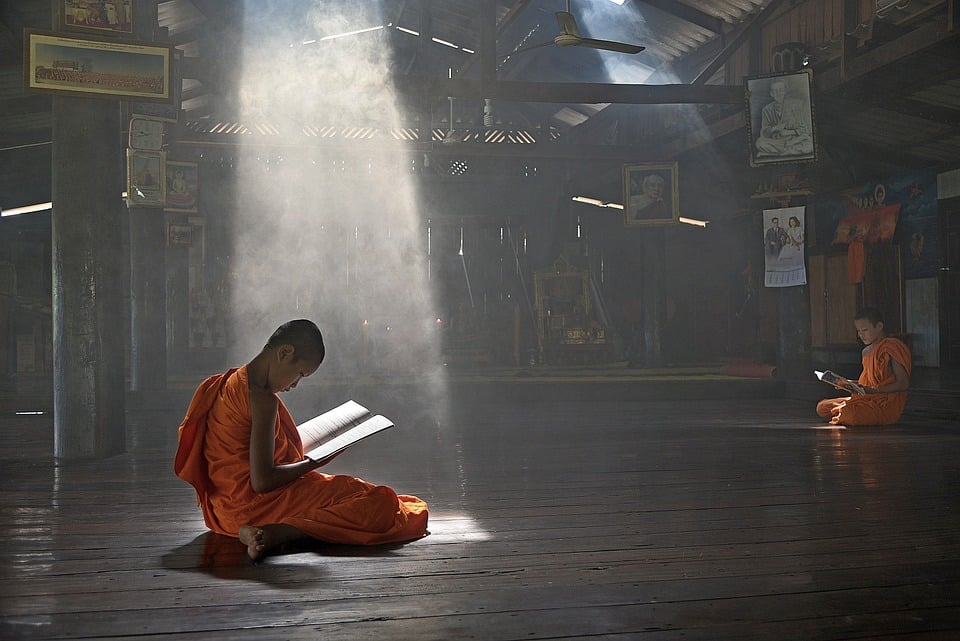
Upon becoming enlightened, the Buddha realized that all things are inherently the same. He taught of emptiness as no things had a foundational thing that separated them. This means everyone has the same potential for enlightenment. In this article I won’t explain what this means more. If you’re interested I recommend looking into Buddhism as a religion more. I only want to note that at its core, Buddhism is the acknowledgement of human suffering and the rejection that we are separate from one another.
As I mentioned before, Buddhism is common across all Asia. This is important to remember as I will explain later how different cultural beliefs has influenced Buddhism as it spread. Therevada Buddhism or ‘School of the Elders’ is a traditional sect of Buddhism. This sect is popular throughout much of Southeast Asia such as Sri Lanka, Myanmar, and Cambodia. Here, Buddhist schools emphasize traditional forms of meditation and scripture. Mahayana Buddhism is another large sect in Buddhism.
Mahayana Buddhism started as a small movement in India, but it is predominate in East Asian countries such as China, Korea, and Japan. These Buddhist schools emphasis the bodhisattva path itself. Zen Buddhism is a form of Mahayana Buddhism that comes from China during the Tang dynasty and is popular in Japan. This school of Buddhism is a lot less structured than Therevada Buddhism. The Flower Sermon, a wordless sermon from the Buddha was the major inspiration for Zen Buddhist. This sermon symbolizes an indescribable nature of the dharma. You can see these influences in techniques that focuses on breath and concentration.
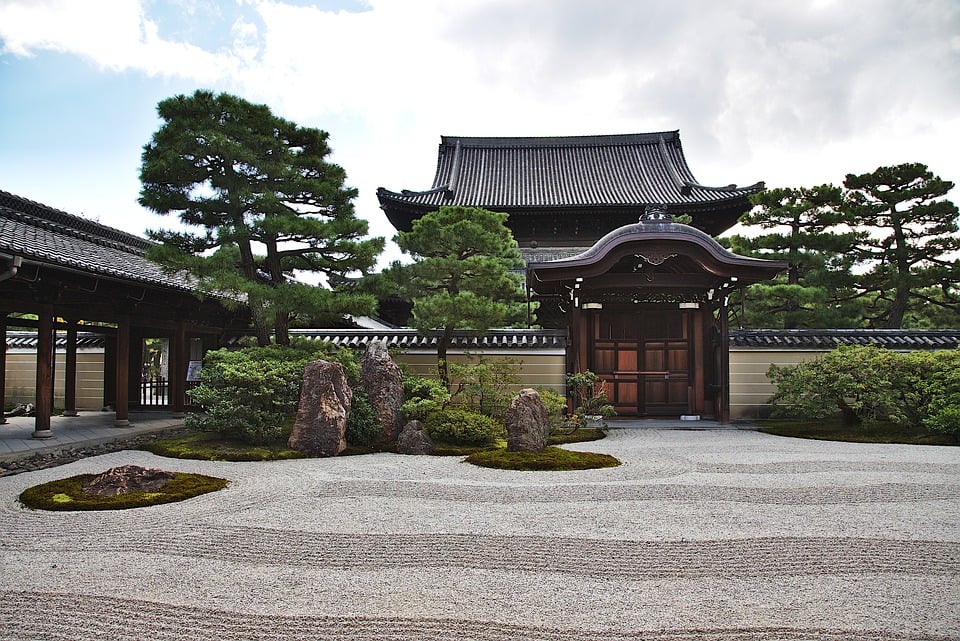
History in Japan
According to the ‘Nihon Shoki’, Buddhism was introduced in Japan in 552 CE during the Asuka period (飛鳥時代). It was around this time that the statue and teachings of Buddha were presented by the Holy King of Baekje. In 592 CE, Empress Suiko (推古天皇) ascended the throne after having taken vows of a Buddhist nun. This marks the first influence of Buddhism in Japanese politics. However, Buddhism did not spread across Japan until Prince Shotoku (聖徳太子,574-622CE). During the Asuka Period, Prince Shotoku commissioned many Buddhist temples such as Shitenno-ji in Osaka and Horyu-ji in Nara Prefecture. With his influence on legends, popularity spread with Buddhism among commoners.
One aristocratic family known as the Soga Clan were the main patrons of Buddhism. The Soga Clan had many connections with outside influences such as from Korea and China. They favored the adoption of Buddhism and governmental models based in Chinese Confucianism. The desire to reform Japan into this model led them to support the spread of Buddhism. The other influential families saw this as an affront to the traditional ‘kami’ or gods leading to conflict with the Soga Clan.

Horyu-ji in Nara Prefecture established by Prince Shotoku in 593
Despite the original resistance to Buddhism, popularity rose with a push to reform the government. Buddhism was seen as a way to unify the clans under the Emperor. In the Hakuho period (白鳳時代, 673-686 CE), the official patronage of Buddhism changed to the imperial family. This change was known as Hakuhō Buddhism (Hakuhō refers to Emperor Tenmu 天武天皇). This means Buddhist institutions became an important part of the centralizing reforms of this era (the Taika reforms 大化の改新). The imperial government built Buddhist temples and many rituals centered around Buddhist sutras.
In the Nara period (奈良時代, 710–794 CE), Empress Genmei (元明天皇) moved the state capital to Heijokyo (modern Nara). Nara state sponsorship developed of the six great Nara schools, called Nanto Rokushu (南都六宗). These schools were built around the capital with temples such as Asuka-dera (飛鳥寺) and Tōdai-ji (東大寺). State temples conducted rituals (centered around the Golden Light and Lotus Sutra) for the imperial family.
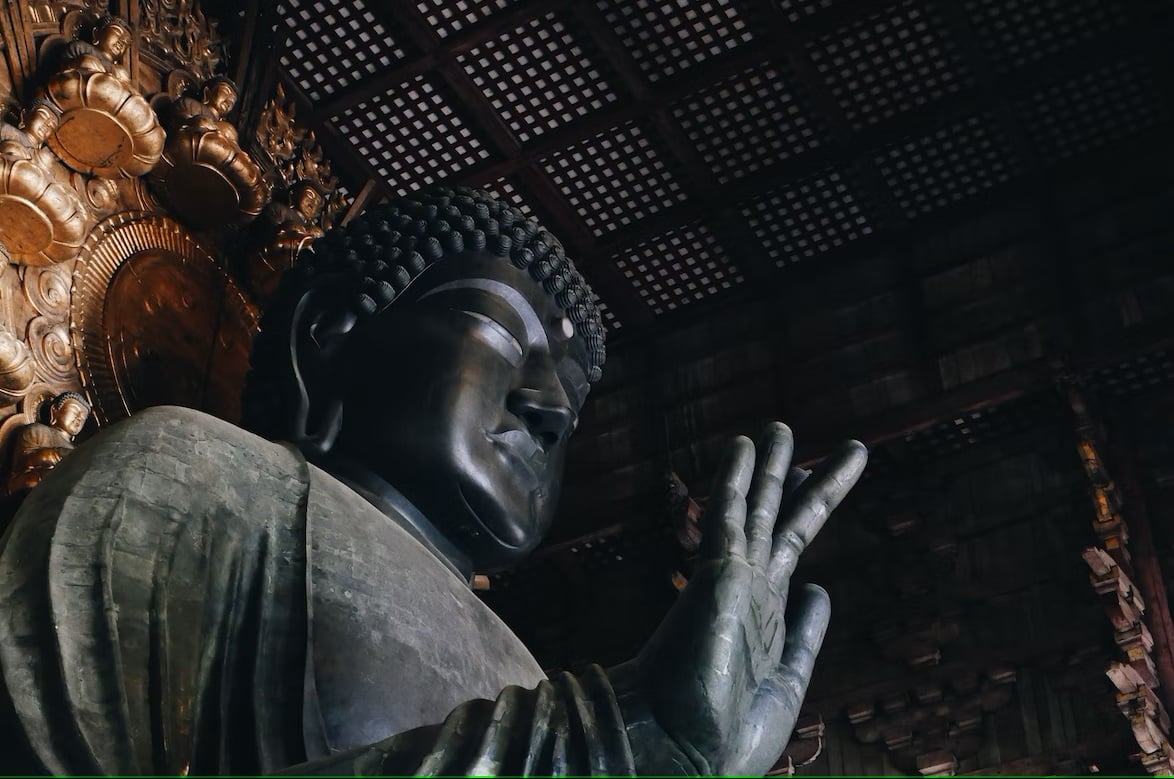
As the monasteries gained strong political influence, concern about their power over the emperor began to grow. Because of this, the capital then moved to Nagaoka in 784 CE and then finally to Heian (later known as Kyoto) in 794. This led to the Heian Period (平安時代, 794–950 CE) which started under Emperor Kanmu (桓武天皇). Buddhist institutions continued to play a key role in the state, with Kanmu being a supporter of the new Tendai school of Saicho (767–822 CE).
The Monk Saicho (最澄) studied teachings from Tiantai school (天台) in China. With these teachings, he established the influential temple complex of Enryakuji (延暦寺) at Mount Hiei (比叡山) north of Kyoto. Saicho developed a new system of monastic regulations based on the bodhisattva precepts. This allowed Tendai to free itself from direct state control. Because of this, Tendai Buddhism established military presence with the warrior-monks called Sohei (僧兵). In the Genpei war (源平合戦) various groups of warrior monks joined the fray for political influence.
An important development in Buddhist monks was in the merging of Shinto dieties (from the traditional religions of Japan prior to Buddhism) with Buddhist practices. This plays a significant role throughout the development of Buddhism in Japan distinguishing it from Buddhism in other parts of the world. This phenomenon will be discussed in more detail later.
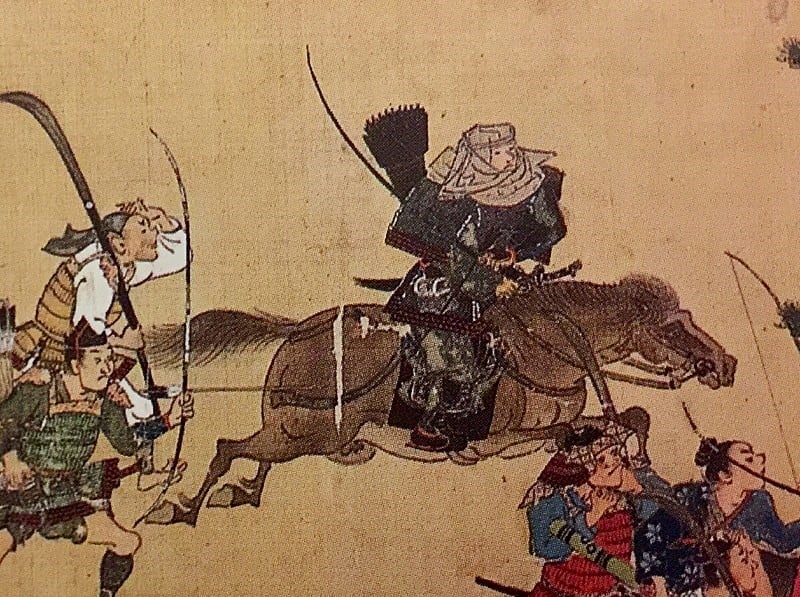
Control in politics moved from the imperial aristocracy to the now growing class of warriors or samurai (侍) in the Kamakura period (鎌倉時代, 1185–1300). In 1185 the Kamakura shogunate (鎌倉幕府) was established in Kanagawa Prefecture. The major founders of “Kamakura Buddhism” were former Tendai monks who had trained at Mt. Hiei. During the Kamakura period, the majority of these new schools remained less prominent than the older lineages. However, the Rinzai Zen school (臨済宗) was one of the few new schools that took on popularity.
In the Marumachi Period (室町時代, 1336-1573), the established schools remained under the traditional political influence. At the height of the medieval era, political power began to be decentralized. This led to the shrine-temples to compete for influence. Both the Kamakura shogunate (1192–1333) and the Ashikaga shogunate (1336–1573) supported the “Five Mountains culture” (五山十刹制度) of Rinzai Zen (臨済宗). The “Five Mountain” temples referring to five temples in Kyoto and five in Kamakura. Teaching zazen meditation became quite popular in Japan. But additionally, studies in esoteric Buddhism such as art forms like calligraphy and poetry also increased.
Much of the period saw conflict in philosophical and political powers. Beginning with the Onin War (応仁の乱, 1467–1477), there was a large devolution of central government control. This resulted in the rise of regional samurai warlords called Daimyos (大名). This decentralized era is now known as the “warring states era” (戦国時代) due to widespread warfare. Many Buddhist temples and monasteries were destroyed, particularly in and around Kyoto. The Tendai warrior monks remained a major political power until their defeat at the hands of Oda Nobunaga (織田信長, 1534–1582).
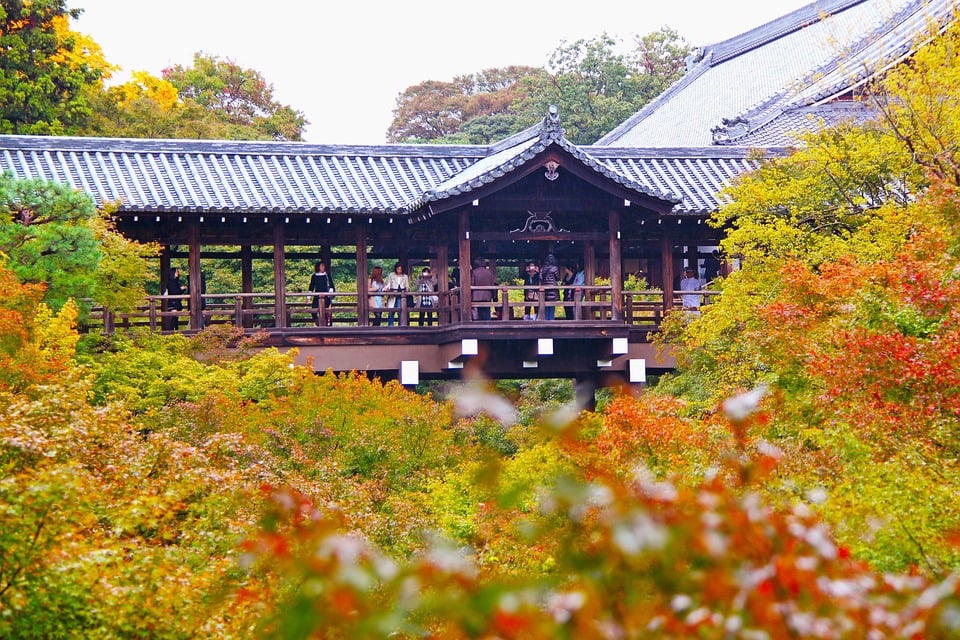
After the Sengoku period of war, Japan was united again by the Tokugawa Shogunate (1600-1868). This is the famous period of time known as the Edo period (江戸時代, 1600–1800). The borders of Japan were closed. This lack of contact limited exchange between Japanese Buddhism and Buddhism in the rest of the world. Despite this, Buddhism thrived with the support of the Shogunate. This led to growth in philosophical works as well as the spread of Sanskrit studies and other scholarly work. One particularly famous case was the spread of Soto Zen. Scholars undertook a major attempt to study the works of the historical writer Dogen (道元禅師, 1200-1253). Buddhist institutions procured funding through various rituals such as the sale of talismans, posthumous titles, prayer petitions, medicine, and financial support from different influential families.
However, much popularity around Buddhism fell after the Meiji Restoration in 1868. The new imperial government eradicated the prior system of Daimyos and Shogunate. This ended the Edo Period during the new push for modernization. A new form of Shintoism rose. This resulted from a systematic separation from Buddhism through the Kami and Buddhas Separation Order (神仏判然令) of 1868. Shintoism became the state religion with new ideologies to return to a pure “Japanese spirit”. Buddhism became viewed as a corrupting by foreign influences that corrupted Shintoism. This resulted in an order to dismantle the combined temple-shrine complexes.
To further the view of Buddhism as a corrupting force, Buddhism became associated with the corrupt Shogunate. This rooted in the Tokugawa danka system (檀家制度). Throughout the Edo period, the danka system tied Buddhist temples with nobility and made affiliation with Buddhist temple compulsory. Many Buddhist temples abused this system to make money, causing an undue burden on their parishioners. Fueled by growing resentment, religious persecution of Buddhist practitioners spread across Japan. This was known as haibutsu kishaku (廃仏毀釈, literally: “abolish Buddhism and destroy Shākyamuni”). This led to the destruction of Buddhist institutions throughout Japan, the confiscation of land, the destruction of Buddhist books and artifacts, and in some instances, the death of monks.
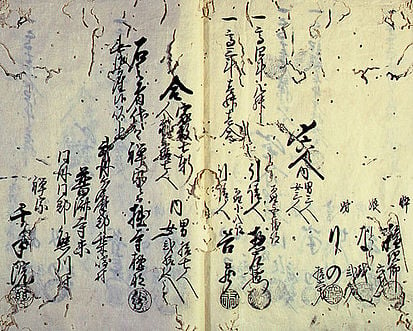
State Shintoism which supported the power of the emperor, allowing Japan to militarize under imperial power. Supporting war effort was seen as a way to push Japan into modernization and become a major power. Following this trend, some Buddhists, such as Tanaka Chigaku, saw the war efforts as a way to spread Buddhism and remain relevent. This led many Buddhist monks to perform rituals for victory in battle and work with the families of fallen soldiers throughout World War II.
After World War II, state Shintoism was abolished. The separation of religion and state became an official part of the Japanese constitution. For the first time, Buddhist temples and institutions became independent from politics. In the 1950s, temples began to harness tourism as means of procuring funding. By the 1970s, there was a period of rapid social and economic change. This led to a wave of new religious movements known as “new religions” (新宗教). This spread the trend of restructuring older traditional religions and foreign influences from religions like Christianity. With long term resentment with the history of these religions, there was strong efforts to recontextualize them in the modern age.
The post-war era also saw a new philosophical movement among Buddhist intellectuals. For example, one of these groups was the Kyoto Schools, led by a group of Kyoto University professors. Famous professors included Nishida Kitarō (西田幾多郎, 1870–1945), Tanabe Hajime (田辺 元, 1885–1962), and Nishitani Keiji (西谷啓治, 1900–1991). These thinkers drew from Western philosophers such as Kant, Hegel and Nietzsche to analyze Buddhist thought.
Another intellectual field that has attracted interest was Critical Buddhism (批判仏教). This field was associated with Sōtō Zen priests who criticized certain key ideas in Japanese Mahayana. Examining the moral failings of Japanese Buddhis became popular in Buddhist discourse. Particularly, nationalist violence and social discrimination were critiqued.

Shinto Integration
As you can see throughout history, Shintoism and Buddhism play a crucial role in Japanese worldview. However, the relationship between Shintoism and Buddhism has always been complicated.
To understand this integration, it’s important to understand what Shinto is (outside of the state form of Shintoism). To break down Shintoism, it is good to understand the word Shinto (神道). The Kanjis of this word consists of shin (神) which is the character for kami or soul/spirit/god and tou (道) which is the character for path or “way of”. A direct translation would be “The Way of the Spirit” or “The Way of the Kami”. Unlike Buddhism (known as 仏教 or “Buddha Teachings”), Shinto is not a direct teaching of doctrines and literature. Instead, it is a set of thoughts and attitude inherited from ancient animism over time.

Additionally, there is a fundamental difference between Asian religions and European religions. This predominately being the Abrahamic practices of Christianity and Islam. In these religions, a belief that there is one true practice (such as a belief in one god) holds strong influence. These teachings make practicing other religions that do not hold the same doctrine difficult, if not impossible. Many Asian religions (religions such as Buddhism and Shintoism) don’t have such concepts. This allows practitioners to partake in multiple religious practice and beliefs at once. As I mentioned before, this has led to a lot of diversity in Buddhism as it spread across the world. The same is true in Japan with Shintoism, but it also occurred with beliefs like Daoism in China.
This phenomenon in Japan is known as shinbutsu shugo (神仏習合) which means “the integration of the kami and the buddha”. This was integration roots back to the Heian Era. The merging of Shinto deities with Buddhist practice still exists all throughout Japan. For example, weddings are traditionally in Shrinto Shrines while funerals are held in Buddhist temples. In fact, many Japanese people don’t know the differences in the religions.
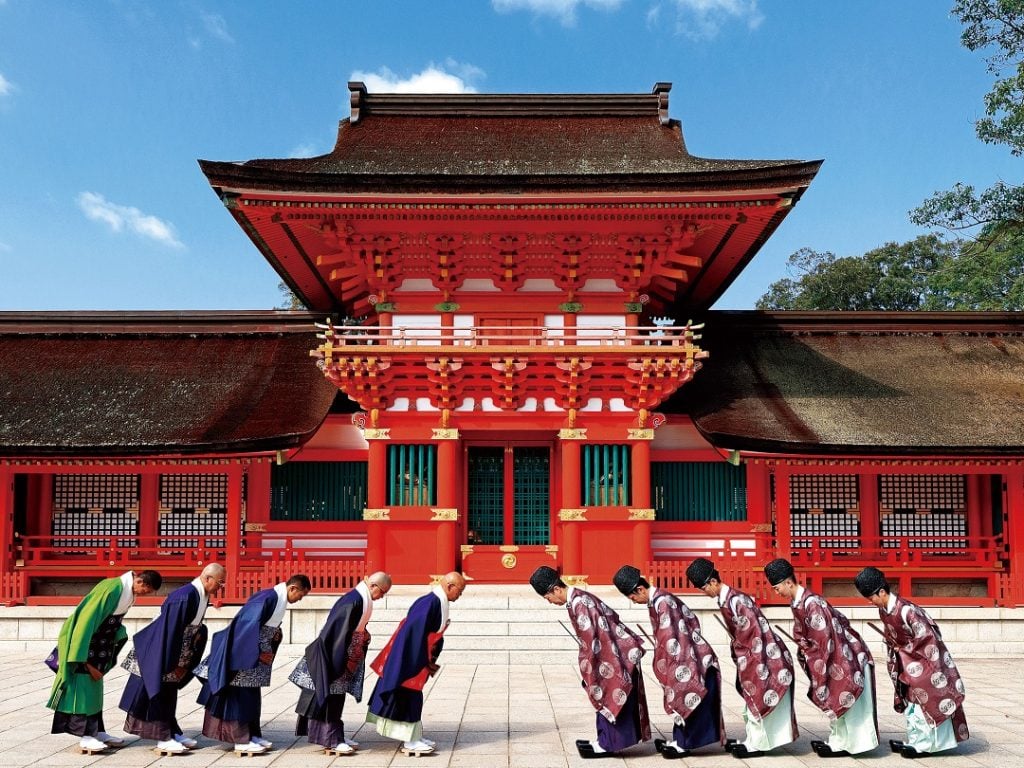
A big distinguishing factor between Buddhism and Shintoism can be seen in their rituals focus on. Many Buddhist teachings focus on ethics, virtues, and death. Shintoism, instead, focuses on the relationship between humans and nature. Shintoism distinguishes between this world that we live in (この世) and that world outside of the world we live in (あの世). Shinto shrines (神社) are the gateways between the worlds. This is why we bow beneath the tori gate that sits in the threshold of the city and the mountains. Shintoism is a way to show respect nature and all the spirits (or kami) that come from it. Buddhism teaches about enlightenment and reincarnation. The Buddhist scriptures teaches how to treat our neighbors with respect and kindness. With a focus on suffering, it provides a way to find inner peace. Thus, the two can work together in modern Japanese mindset to encourage harmony both with nature and other people.
For Further Readings:
- Edelglass, W. and Garfield, J. (2009). Buddhist Philosophy: Essential Readings. New York: Oxford University Press
- Kapleau, P. (1980). The Three pillars of Zen: Teaching, practice, and enlightenment. London: Rider.
- Keown, D. (2001). Buddhism: A very short introduction. Oxford, NY: Oxford University Press.
- Kitagawa, J. (1987). On Understanding Japanese Religion. Princeton University Press.
- Teeuwen, M. & Rambelli, F. (2002). Buddhas and Kami in Japan: Honji Suijaku as a Combinatory Paradigm. London: Routledge Curzon.
- Shimada, H. (2022). Nihonjin no Shintō: Kami saishi jinja no nazo O toku. Chikuma shobō. [日本人の神道:神・祭祀・神社の謎を解く]
- Siderits, M. (2007). Buddhism as philosophy. Hackett Publishing Company.
- Thompson, L. (2017). Returning to the Founder: Śākyamuni Devotion in Early Medieval Japan and Japanese Buddhist Conceptions of History. Columbia University.
















